Leo Kärkkäinen
Uncertainty-aware deep learning methods for robust diabetic retinopathy classification
Feb 02, 2022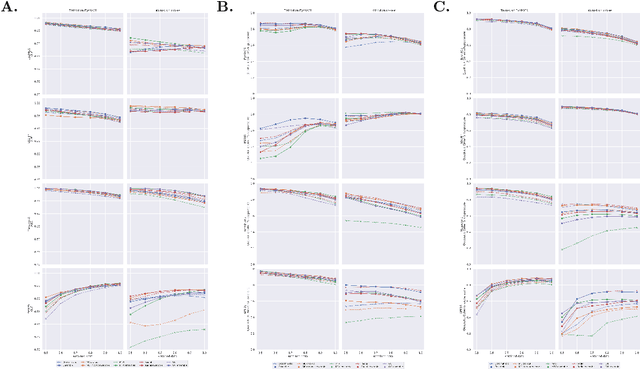
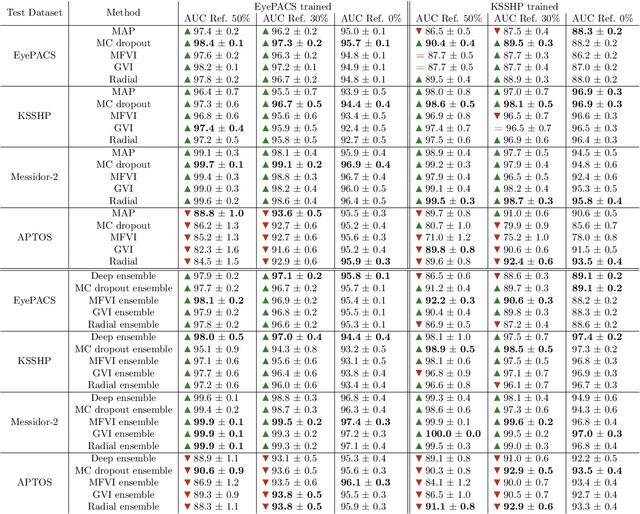
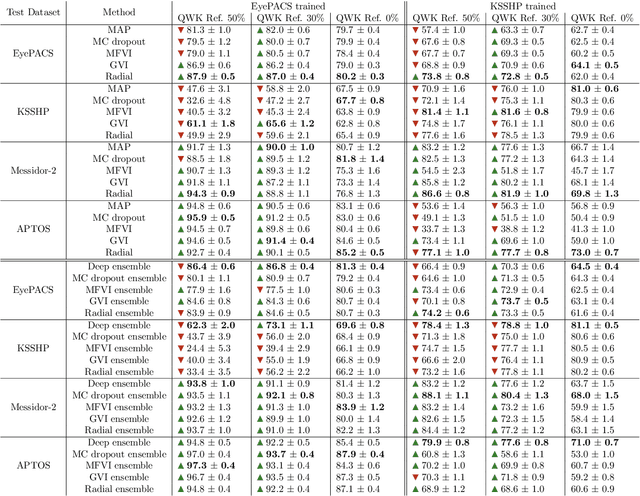
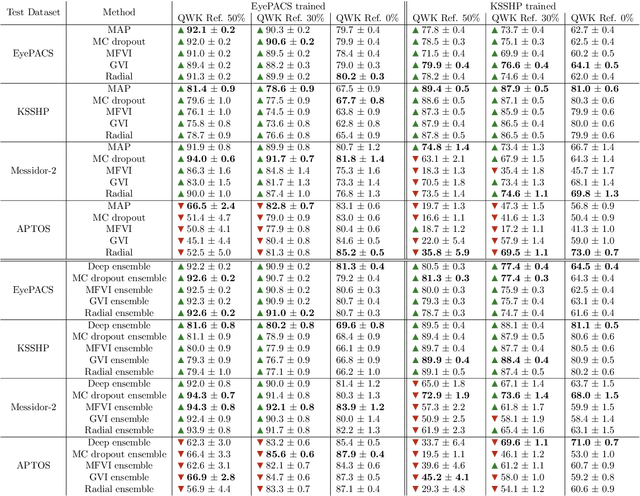
Abstract:Automatic classification of diabetic retinopathy from retinal images has been widely studied using deep neural networks with impressive results. However, there is a clinical need for estimation of the uncertainty in the classifications, a shortcoming of modern neural networks. Recently, approximate Bayesian deep learning methods have been proposed for the task but the studies have only considered the binary referable/non-referable diabetic retinopathy classification applied to benchmark datasets. We present novel results by systematically investigating a clinical dataset and a clinically relevant 5-class classification scheme, in addition to benchmark datasets and the binary classification scheme. Moreover, we derive a connection between uncertainty measures and classifier risk, from which we develop a new uncertainty measure. We observe that the previously proposed entropy-based uncertainty measure generalizes to the clinical dataset on the binary classification scheme but not on the 5-class scheme, whereas our new uncertainty measure generalizes to the latter case.
Bidirectional Recurrent Neural Networks as Generative Models - Reconstructing Gaps in Time Series
Nov 02, 2015

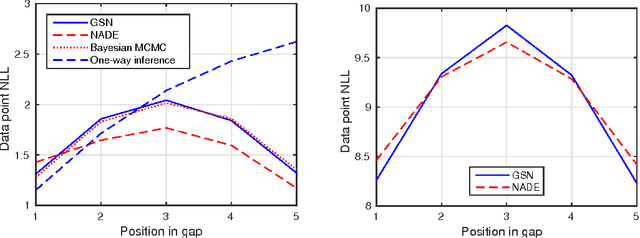

Abstract:Bidirectional recurrent neural networks (RNN) are trained to predict both in the positive and negative time directions simultaneously. They have not been used commonly in unsupervised tasks, because a probabilistic interpretation of the model has been difficult. Recently, two different frameworks, GSN and NADE, provide a connection between reconstruction and probabilistic modeling, which makes the interpretation possible. As far as we know, neither GSN or NADE have been studied in the context of time series before. As an example of an unsupervised task, we study the problem of filling in gaps in high-dimensional time series with complex dynamics. Although unidirectional RNNs have recently been trained successfully to model such time series, inference in the negative time direction is non-trivial. We propose two probabilistic interpretations of bidirectional RNNs that can be used to reconstruct missing gaps efficiently. Our experiments on text data show that both proposed methods are much more accurate than unidirectional reconstructions, although a bit less accurate than a computationally complex bidirectional Bayesian inference on the unidirectional RNN. We also provide results on music data for which the Bayesian inference is computationally infeasible, demonstrating the scalability of the proposed methods.
 Add to Chrome
Add to Chrome Add to Firefox
Add to Firefox Add to Edge
Add to Edge